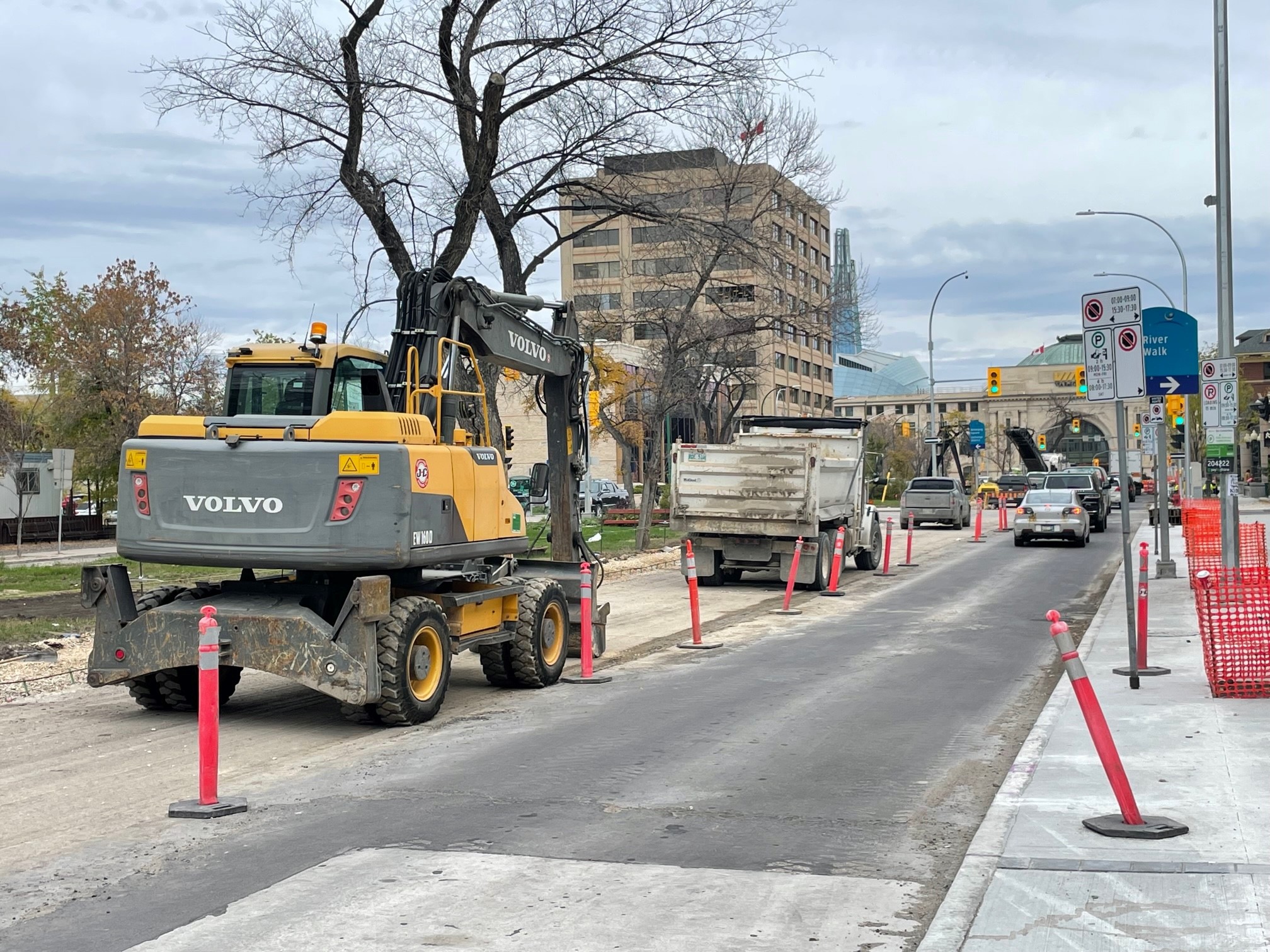
As another busy construction season winds down, planning for next season is ramping up.
“Despite the fact you don’t often see road construction in the colder months, our work on construction projects doesn’t take a winter vacation,” said Jim Berezowsky, Director of Public Works. “Winnipeggers only see a piece of the work that goes into keeping our roads, sidewalks, and pathways in a usable state.”
More than 200 road construction projects broke ground across the city in the 2023 season with a budget of nearly $159 million. These projects included major road reconstructions, rehabilitation work, back lane repairs, and sidewalk construction and maintenance.
Work on them wasn’t limited to what Winnipeggers saw on the streets.
Planning for many began as much as five years prior to any actual construction work.
“Now, as crews come off the road, we’re continuing to work behind the scenes to set up projects for next year and beyond,” said Berezowsky.
A good part of this work is logistical, ensuring construction season disrupts Winnipeggers’ movements as little as possible.
“We know traffic impacts from construction can be frustrating,” Berezowsky said. “It may not seem like it when detours are in place but making it harder to get around the city is the last thing we want to do.”
For example, we try to avoid scheduling work on more than one main route leading into and out of one area. We also try to avoid scheduling jobs together that would redirect more than one bus or truck route onto the same residential street.
Unfortunately, all construction disrupts things at least a little.
And sometimes things like the total number of projects, unexpected roadway failures, or construction delays from previous seasons make it hard to avoid more than one disruption in a given area.
How we determine what gets fixed when
Ultimately, planning the best and most cost-effective road construction season involves applying the right treatment to the right pavement at the right time.
Our engineers rate the condition of all pavement surfaces on a two-to-three-year cycle. This helps determine which roads should be prioritized for repairs.
The rating system looks at things like:
- Where the street is and how much traffic it sees
- Pavement condition and age
- Whether the street serves buses and trucks
- Other construction or development in the area
- Cost and available funding
The pavement rating system tells us which streets are in the worst shape, as well as which are in good or fair condition. This helps us determine what streets require full overhauls and where we can intervene earlier with less expensive treatments before small problems get bigger.
We also repair potholes, curbs, and surface issues across the city throughout the year to keep streets drivable between more involved reconstruction projects.
How we try to minimize disruptions
Our early planning on most projects includes reaching out in advance to those whose property or access may be affected by construction.
We work with them to maintain access as much as possible. We also try to make the construction schedule, construction staging, and potential detours less cumbersome.
Where possible, we try to limit construction on major streets to off-peak hours when traffic volumes are lower to ease congestion on our roads. Overnight or 24-hour construction may be possible at some locations, but brings its own challenges like noise concerns, higher costs, and staffing difficulties.
At street level, our Transportation Management Centre adjusts traffic signal timings to try to reduce congestion and maintain traffic flow in an area affected by construction.
We also sometimes place advanced notice boards to inform commuters of upcoming construction work.
Sometimes we fully close roads to shorten the overall project length, or we may do construction overnight if it’s a job that needs to be done in succession, very quickly, and for a short period, like one or two days at a high-traffic intersection.
“Coordinating hundreds of projects in a very short season can be daunting, but we have a great team of engineers working on plans to keep people moving,” said Berezowsky.
“It’s important to point out that we are always willing to work with business owners and residents to solve any problems that arise.”
We encourage anyone who encounters accessibility concerns during road construction to reach out directly to the contacts on their construction notice.
For more information about road construction and how we plan ahead for future years, visit: winnipeg.ca/publicworks.
